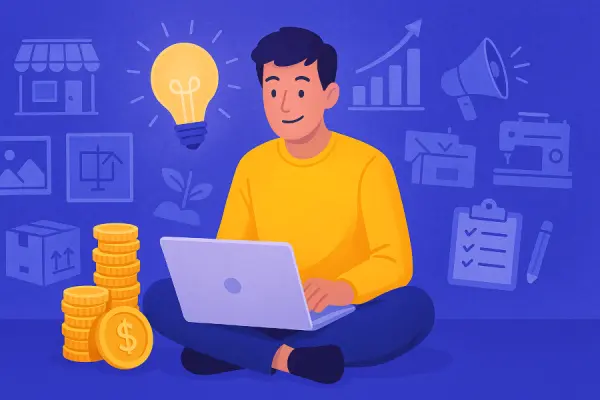Have you ever found yourself on edge every time you read news about artificial intelligence (AI)? From evil robots to predictions of job losses, AI is often portrayed as a looming threat of the future. It's no surprise that AI-related topics frequently go viral, stirring curiosity and, frankly, a bit of anxiety among readers. Yet behind the sensationalism, there are often grounded nuances and facts. Isn't it more reassuring if we can distinguish what’s real from what’s just storytelling embellishment?
Why Do AI Myths Spread So Quickly?
It’s not an exaggeration to say that AI has become a source of both thrilling tales and hopeful visions for humanity in recent years. Numerous films and news stories hype up sensations about "intelligence surpassing human capabilities" or robots replacing professions. But why do these narratives attract so much attention?
The answer is simple: humans love drama. Stories about robots taking over the world are far more gripping than discussions on how AI helps doctors analyze X-rays more accurately. In the digital age, emotionally charged stories tend to spread faster than straightforward factual explanations.
Myth 1: "AI Will Take Over the World"
Maybe you’ve seen apocalyptic-themed movies like The Terminator or Ex Machina. AI characters on screen are often depicted not only as intelligent but also possessing their own dangerous will. But is real-life AI really that frightening?
In reality, modern AI is still far from concepts like "consciousness" or self-awareness. Most AI, such as those used in chat applications, online shopping recommendations, or even autonomous vehicles, function through data analysis and mathematical patterns. AI performs specific tasks with high efficiency, but they have no ambitions or goals like humans do. They simply execute instructions programmed by humans, with "intelligence" strictly limited to specific domains.
Everyday Example: AI in Real Life
Have you ever used Google Maps? There, AI helps you find the fastest route. On social media, AI filters out spam. Even your smartphone’s camera app uses AI to enhance photos. This AI isn’t a super-being taking over the world, but a daily tool designed to make human life more convenient.
Myth 2: "AI Will Cause Mass Unemployment"
Many rumors circulate about machines replacing human jobs, from cashiers to lawyers. This concern is understandable—technological change can reshape the labor market. But is it true that AI will create massive unemployment?
The reality is more nuanced. Whenever a new technology emerges, some jobs shift. Sewing machines replaced manual tailors but also created opportunities in distribution, design, and sales. AI is driving the emergence of entirely new roles—such as data analysts, AI developers, and "AI ethicists" who ensure responsible AI usage.
A Revolution Partnering With Humans
Rather than simply replacing jobs, AI expands opportunities for human-machine collaboration. In medicine, AI assists doctors in diagnosing diseases earlier. In creative industries, AI helps artists develop ideas. The principle isn’t "AI versus humans," but AI as a partner, not a competitor. Like previous industrial revolutions, the key lies in humans adapting and learning new skills.
Myth 3: "AI Is Always Neutral and Objective"
We often imagine technology as free from bias. However, AI is just a tool that learns from the data it receives. If the data is skewed or biased, the results will be unfair. AI can unintentionally reinforce biases embedded in human data—for example, in automated hiring or credit scoring systems.
That’s why it’s crucial for AI developers to prioritize ethics, transparency, and diverse data to ensure the technology truly balances inequality rather than exacerbates it.
Myth 4: "AI Is Only for Developed Countries or Big Companies"
AI is increasingly inclusive and penetrating various sectors worldwide, including Indonesia. From automatic translators for small and medium enterprises, AI-based customer service chatbots, to smart farming apps in villages—these prove AI is becoming broadly accessible.
There are also many free AI-based tools available in multiple languages, bringing information and technology closer to everyone, everywhere. With AI becoming more open and affordable, anyone can benefit—provided they remain open to learning and experimentation.
Why Does Clarifying Myths Make Us Smarter?
Examining myths and seeking facts sharpens our critical thinking. We become less vulnerable to alarming rumors, yet stay aware of real risks needing collective attention. Through clarification, we avoid traps of overhype or baseless mass fear.
Accurate knowledge, paired with concrete examples, boosts our confidence to interact with AI consciously and wisely. And of course, it adds fresh, meaningful conversation topics for family, friends, and colleagues across cultures.
Conclusion
Lorem ipsum dolor sit amet, consectetur adipiscing elit, sed do eiusmod tempor incididunt ut labore et dolore magna aliqua. Ut enim ad minim veniam, quis nostrud exercitation ullamco laboris nisi ut aliquip ex ea commodo consequat. Duis aute irure dolor in reprehenderit in voluptate velit esse cillum dolore eu fugiat nulla pariatur. Excepteur sint occaecat cupidatat non proident, sunt in culpa qui officia deserunt mollit anim id est laborum.
Closing
Thank you for reading until the end. If you have stories or thoughts about artificial intelligence, don’t hesitate to share—because thoughtful conversations always bring us closer to shared understanding.





Responses